Motor Yacht
Computational Fluid Dynamics provides detailed insight for many kinds of flows, at a cheaper cost than experimental studies, thus allowing engineers to quickly modify, improve, and optimize their design shapes.
Using OpenFOAM, I have modelled the air flow around the superstructure of an 15m Motor Yacht. Flow behaviour over decks of the Motor Yacht was of primary interest.
Only minor modifications were made to the original CAD file provided by the shipyard, such as removing the windshield on the upper deck. Mesh parameters, like curve length and maximum surface area, were manipulated to control better the mesh density.
Details, as the rear spoiler and the lower deck with stairs, are described with sufficient accuracy for such a complex geometry. Boundaries of the computational flow domain were fixed far enough to avoid flow perturbations.


CFD computations were carried out for the full scale yacht. Various wind configurations similar to offshore conditions were selected.
1 at full speed ahead with no ambient
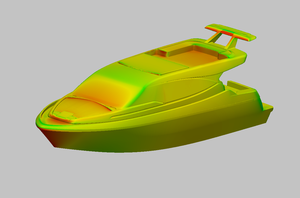
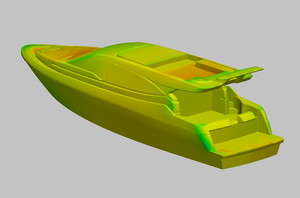
2 at cruising speed ahead in 2.5 knots of beam wind
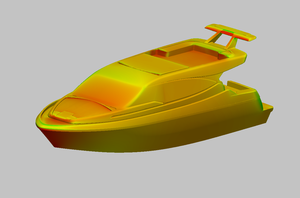
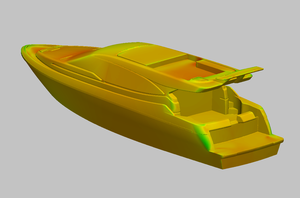
3 at zero ship speed in 10 knots of beam wind
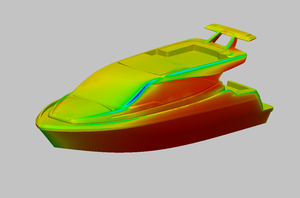
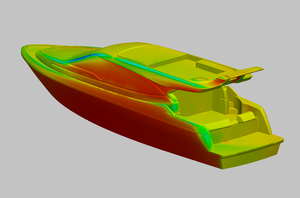
Streamlines are represented as tubes to emphasis two regions of particular interst for the superstructure: the air flow over the stairway which leads from the front deck to the aft-end of the main deck and the air flow over the aft-end of the main deck. Using dedicated post-processing tools we can point to specific areas on the superstructure where modifications may be applied in order to redirect the flow. In particular, streamlines and peak pressure spots help us determine where modifications can be applied to modify the flow behaviour over the geometry and increase the comfort of the passengers onboard.
